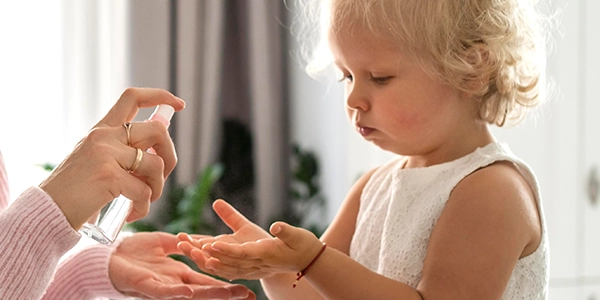A clean, germ-free home is important for every family. But when young children are present, parents often wonder: Are common disinfectants safe to use? By selecting the right products and applying simple safety measures, you can protect your children while maintaining a hygienic living space.
Understanding Disinfectants and Child Safety
Disinfectants eliminate bacteria, viruses, and fungi — essential for preventing illness. However, strong chemical formulas can pose risks to children’s sensitive skin, lungs, and immune systems. Key ingredients often include:
- Bleach: Kills germs but may release irritating fumes and leave residue.
- Alcohol-based sprays: Effective for quick sanitation but can cause dryness or accidental exposure risks for toddlers.
- Quaternary ammonium compounds (quats): Often used in surface cleaners but can linger on surfaces and hands.
- Bio-based formulas: Safer alternatives using eco-friendly ingredients, providing effective protection with lower chemical impact.
Potential Risks for Children
Children are more vulnerable to chemical exposure. Risks include:
- Respiratory irritation: Strong fumes can affect developing lungs, especially in poorly ventilated spaces.
- Skin reactions: Harsh disinfectants may cause rashes or dryness.
- Accidental ingestion: Curious toddlers may swallow residues left on surfaces or access improperly stored products.
How to Disinfect Safely at Home
With thoughtful choices and good habits, you can maintain a safe and healthy environment:
- Use bio-based surface disinfectants: Products like Logic Germ Surface Disinfectant provide long-lasting germ protection using eco-friendly, low-alcohol formulas. They eliminate bacteria, fungi, and viruses without harsh fumes — making them ideal for homes with children.
- Choose alcohol-free hand sanitizers: A skin-friendly option like Logic Sept+ offers 99.99% germ protection without the drying effects of alcohol, making it gentle for both adults and kids.
- Improve ventilation: Open windows and ensure airflow during and after cleaning.
- Store products securely: Keep all cleaning agents out of reach of children.
- Rinse high-contact surfaces: If using stronger chemicals, wipe surfaces with a damp cloth after disinfection to remove residues.
Natural Alternatives for Daily Cleaning
For routine cleaning tasks, consider natural options:
- White vinegar: Effective for light disinfection and deodorizing.
- Baking soda: Gentle on surfaces and great for odor control.
- Lemon juice: Naturally antimicrobial with a pleasant scent.
- Steam cleaning: A chemical-free way to sanitize hard surfaces.

Managing Mold and Mildew Safely
Damp areas in homes — bathrooms, kitchens, basements — can attract mold, which affects air quality and may trigger allergies. Using chlorine-free options such as MoldEx Anti-Mold and Mildew Spray allows parents to control mold growth without harsh chemicals, protecting both surfaces and family health.
Conclusion
Maintaining a hygienic home is essential — especially with young children. By choosing modern, bio-based disinfectants and gentle hand sanitizers, improving ventilation, and using safe mold-control methods, parents can create a healthy environment without unnecessary chemical risks. The right balance of safety and cleanliness helps every family thrive.